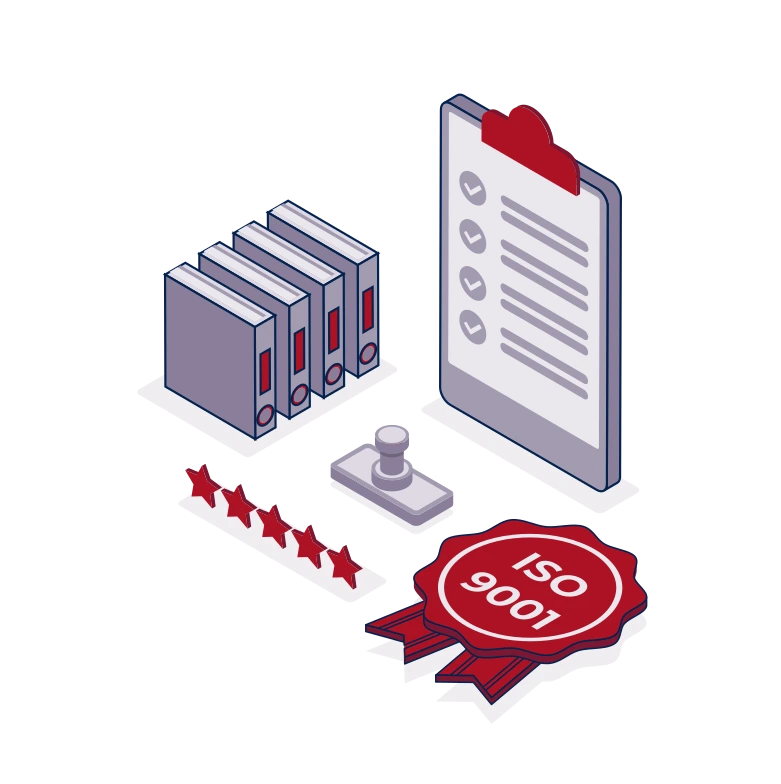Freight Shipping between Qatar and India | Rates – Transit times – Duties and Taxes
Transporting goods between Qatar and India can be as spicy as a good bowl of Chicken Biryani—but hold on, this is no culinary adventure! This relationship of freight, time, and customs regulations often materializes as a formidable challenge for businesses. Fear not, as this comprehensive guide is designed to put spice back where it belongs—on your plate, not your freight, and certainly not in your loftiest business pursuits.
In this manual, we'll dive into the intricate details of freight transportation, exploring every facet—air, sea, road, and rail. You'll find detailed discussions on customs clearance processes, duties, taxes, and critical pointers that are specifically tailored for your business needs. And, if the process still feels overwhelming, let DocShipper handle it for you! As your dedicated international freight forwarder, we steer every step on your shipping journey, mutating challenges into gleaming trophies of success for your business.
Which are the different modes of transportation between Qatar and India?
When it comes to shipping between Qatar and India, one could play connect the dots on a map and spot the clear winning option - sea freight. The straight, unobstructed path via the Arabian Sea puts the brakes on air travel, while ground logistics hit a dead end with unfriendly borders. Roaring waves or rocky roads? Here, the sea emerges a matchless method. However, it's pivotal to align this choice with your specific shipping needs and challenges, thus, creating a route charter that ensures your cargo sails smoothly from port to port.
Need help with your shipment?
Need assistance with your shipment? Dont hesitate to contact us even for a simple question. Choose the option that suits you
Live chat with an expert Chat on WhatsApp Free Quote 24hHow can DocShipper help you

Sea freight between Qatar and India
Ocean shipping your cargo from Qatar to India, or vice-versa, presents an effective, budget-friendly solution for high-volume transport despite its longer timeline. The trading dynamics between these two powerhouse economies are reflected in the busy cargo docks at Port of Hamad in Qatar and Mundra Port in India, pivotal lifelines in their bustling manufacturing sectors.
However, this substantial waterway journey is not without its hurdles. Messy document handling, customs misunderstandings, inadequate packaging – the list of potential blunders many shippers and businesses wrestle with is hefty. It’s akin to a football game; knowing the rules doesn’t guarantee you’ll avoid all fouls. That’s where a defined set of best practices can serve as your playbook, offering precise guidelines that demystify the process. In this section, we’ll address those complex corners and introduce you to successful strategies of ocean shipping between Qatar and India that go beyond the mere logistics guesswork.
Main shipping ports in Qatar
Hamad Port
Location and Volume: Hamad Port is strategically located south of Doha in the Umm Al-Houl region. As the main international port of Qatar, it boasts an annual shipping volume of over 3.2 million TEU (Twenty-foot Equivalent Units).
Key Trading Partners and Strategic Importance: Key trading partners include China, India, Oman, and the US, reflecting the port’s crucial role in linking Qatar with major global markets. Hamad Port is instrumental for the country’s food security with dedicated facilities for handling, storage, and processing of food cargo.
Context for Businesses: If you’re planning to penetrate the Middle Eastern market, especially Qatar’s thriving economy, Hamad Port may be an essential part of your logistics, given its substantial handling capacity and state-of-the-art facilities. Its status as a transshipment hub can also offer advantages for your distribution strategy.
Doha Port
Location and Volume: Located in the heart of Qatar’s capital, Doha Port deals with a relatively lower volume of cargo, but it’s strategically important due to its location. It’s being transformed to cater to cruise ships, which is expected to stimulate Qatar’s tourism industry.
Key Trading Partners and Strategic Importance: While Doha Port deals with fewer cargo, its role in promoting tourism is significant. Once revamped, its expected to attract cruise liners from global tourist hotspots.
Context for Businesses: If your business revolves around the tourist industry, Doha Port could play a significant role for you. Its revamping to accommodate cruise liners would be beneficial for businesses such as local artisans, tourism agencies, and local service providers looking to cater to incoming tourists.
Al Ruwais Port
Location and Volume: Al Ruwais Port is located in the northernmost part of Qatar and mainly services the local community. Its volume is significantly less than major international ports but is essential for local fishing and personal use vessels.
Key Trading Partners and Strategic Importance: Al Ruwais Port’s strategic importance lies in its regional significance. It’s a critical port for small fishing vessels, pleasure boats, and maritime vessels from the GCC countries, especially during the pearl hunting season.
Context for Businesses: If your business involves regional sea transportation or you’re a part of the fishing industry, Al Ruwais Port could be a vital component of your operations.
Main shipping ports in India
Port of Nhava Sheva
Location and Volume: Known as Jawaharlal Nehru Port, it’s situated in the Arabian Sea on the west coast of India, in the state of Maharashtra. It’s the largest container port in India, boasting an annual shipping volume of over 4.5 million TEU.
Key Trading Partners and Strategic Importance: The US, Germany, and the UAE are some of the key trading partners. The port plays a vital role due to its strategic location and its capacity to handle ‘Post Panamax’ vessels.
Context for Businesses: If you’re seeking to expand in the middle eastern or European markets, Nhava Sheva’s comprehensive shipping capacity, advanced handling facilities, and strong relationships with these markets could be indispensable to your growth strategy.
Port of Mundra
Location and Volume: Located on the north shores of the Arabian Sea in the state of Gujarat, it’s India’s largest private port with an annual shipping volume of over 4 million TEU.
Key Trading Partners and Strategic Importance: It is strategically important due to its proximity to the oil-rich nations of the Middle East and Western India’s major industrial hubs.
Context for Businesses: Should you be in the oil or manufacturing industries, or looking to penetrate the Middle Eastern market, Mundra’s strategic location offers you efficient access and quick turnaround times for bulk cargo.
Port of Chennai
Location and Volume: Positioned in the Bay of Bengal in the east coast of India, Chennai Port is one of the oldest ports in India and handles over 1.5 million TEU annually.
Key Trading Partners and Strategic Importance: Major trading partners include the USA, China, and Singapore. The port is especially relevant for businesses perhaps targeting the Asia-specific market.
Context for Businesses: If your future business plans entail strengthening your presence in Asia, especially the booming South-East Asian and Chinese markets, Chennai Port may be a key element in your logistics plan.
Port of Visakhapatnam
Location and Volume: Located on the east coast of India facing the Bay of Bengal, it’s one of the country’s most important ports for cargo handling, dealing with over 1 million TEU per year.
Key Trading Partners and Strategic Importance: The port has a strong trade relationship with Asian countries including Singapore, Malaysia, and Myanmar.
Context for Businesses: For businesses looking to capitalize on trading opportunities in Southeast Asia, Visakhapatnam’s modern facilities and its proximity to these markets presents a strong case for consideration.
Port of Kolkata
Location and Volume: Situated on the Hooghly River in the state of West Bengal, Kolkata Port is India’s only riverine port with two dock systems. It can handle approximately 650,000 TEU annually.
Key Trading Partners and Strategic Importance: It is a main trade gateway for North-East India and some Asian countries.
Context for Businesses: If North-East India and neighboring Asian countries like Bangladesh and Nepal are your target markets, Kolkata’s port provides exceptional connectivity.
Port of Cochin
Location and Volume: Sitting on the south-west coast of India on the Arabian Sea, Cochin Port handles more than 500,000 TEU per year.
Key Trading Partners and Strategic Importance: Key trading partners include China, Europe, and the Middle-East. The port is also the fastest-growing transshipment hub in India.
Context for Businesses: Ideal for organisations looking to utilize a growing transshipment hub that connects to key global markets while reducing their shipping costs.
Should I choose FCL or LCL when shipping between Qatar and India?
Shipping your goods from Qatar to India comes with a strategic choice – should you opt for Full Container Load (FCL) or Less than Container Load (LCL), also known as consolidation? This decision isn’t just about fitting items in a box; it’s a balance of cost, delivery speed, and shipping success. Each has its strengths and challenges, and understanding these differences can help your business take the most cost-effective and efficient path. In the following section, we’ll dive deep into these two options, providing the tools to tailor your shipping strategy. Your smart decision starts here.
Full container load (FCL)
Definition: FCL or Full Container Load shipping is a type of ocean freight where a container is exclusively used for a single shipper's goods. This method maximizes container space, typically using a 20'ft or 40'ft container. Offering a seal from origin to destination, FCL guarantees the safety of your cargo during shipping, minimizing damage risk.
When to Use:
FCL shipping is typically economical and secure for high-volume shipments. If your cargo occupies more than 13/14/15 cubic meters (CBM), choosing FCL may be a wise decision. It ensures secure transportation and mitigates the risk of potential mixed-cargo conflicts.
Example:
Imagine shipping heavy auto parts from Doha, Qatar, to Mumbai, India, totaling 20 CBM or more. Opting for an FCL container would not only accommodate the substantial size but also enhance payload security.
Cost Implications:
While you pay for the entire FCL container, high-volume shipments make the cost per unit lower. Note that obtaining an FCL shipping quote before confirming your consignment will help manage the cost better. Keep in mind, initial costs may seem higher, but the security, customs ease, and potential savings for large volumes offer significant advantages.
Less container load (LCL)
Definition: LCL, or Less than Container Load, refers to shipping smaller quantities of cargo not requiring a full container. In this scenario, your goods share space in the container with cargo from other shippers.
When to Use: LCL is the optimal choice when your shipment volume is less than 13-15 cubic meters (CBM). It offers flexibility for lower volumes, reducing costs and providing a more economical solution.
Example: Imagine a furniture seller who wants to export artisanal tables from India to Qatar. However, she only has enough inventory to fill around 10 CBM. Rather than waiting to accumulate more goods or spending excessively on a hardly-filled FCL (Full Container Load), she can use LCL shipment. Her tables share a container with other cargo but arrive safely at their destination.
Cost Implications: LCL is generally more affordable when you have fewer goods. However, it's crucial to take note that the cost of LCL freight can fluctuate based on the freight forwarder’s service charge, the nature of the cargo, and the destination. It includes freight charges, surcharges, and fees related to loading, unloading, and customs clearance.
Hassle-free shipping
Looking to ship cargo from Qatar to India, but unsure whether consolidation or a full container is right for your business? At DocShipper, we simplify the decision-making process. Rely on our ocean freight team to analyze factors such as your budget, urgency, and the volume of your goods, and guide you towards the most effective solution. You'll discover stress-free shipping tailored to your specific needs. Don't hesitate—reach out today for a free cost estimate.
Sea freight from Qatar to India takes an average of 3 days, although this timeframe can vary depending on several factors. Specific ports of origin and destination, the weight and nature of goods, and the sea line chosen for transit are all fundamentals that alter transit times. For a precise quote tailored to your specific shipping needs, we recommend contacting a specialist freight forwarder like DocShipper.
Below is an overview of the average transit times between principal ports in both countries:
| Origin Port (Qatar) | Destination Port (India) | Average Transit Time (Days) |
| Hamad Port | Nhava Sheva | 3 |
| Hamad Port | Mundra | 3 |
| Hamad Port | Chennai | 4 |
| Hamad Port | Kolkata | 6 |
*Please remember, these times are indicative averages and actual transit times may vary. Consult with your freight forwarder for detailed and accurate information.
How much does it cost to ship a container between Qatar and India?
Unraveling the mystery of container shipping costs from Qatar to India? A wide range of factors makes pinpointing an exact price tricky. The Point of Loading, Point of Destination, the chosen carrier, the type of goods, and unfixed market fluctuations all contribute to dynamic ocean freight rates. While the ballpark figure can fall anywhere from hundreds to thousands per CBM, this is more of a rough guide than a definitive cost. Don’t fret—our seasoned shipping specialists are at the helm, ready to work with you for the best package. Every single quote is individually crafted, promising you genuine value, as akin to your shipping needs.
Special transportation services
Out of Gauge (OOG) Container
Definition: An OOG container, also known as an Out of Gauge container, is a unique shipping model explicitly designed to carry oversized goods. These are goods that surpass the standard dimensions of regular shipping containers.
Suitable for: Out of Gauge cargo that surpasses standard shipping dimensions. This includes tall, long, or wide cargo.
Examples: OOG containers are suitable for shipping items like large machinery, boats, industrial equipment, and oversized spare parts.
Why it might be the best choice for you: If your cargo doesn’t fit into ordinary containers due to its dimensions, opting for an OOG container can ensure seamless, secure shipping between Qatar and India.
Break Bulk
Definition: Break bulk refers to goods that must be loaded individually, and not in shipping containers or any form of unitization. Such goods are often loaded onto special vessels designed for unique or loose cargo loads.
Suitable for: Non-containerized load, large equipment or machinery, and goods that are not suitable for container shipping.
Examples: Construction equipment, turbines, cranes, or oil and gas equipment.
Why it might be the best choice for you: If your cargo consists of large equipment or machinery that can’t be efficiently or safely containerized, break bulk shipping can be advantageous in terms of cost and handling.
Dry Bulk
Definition: Dry bulk shipping involves the shipping of loose goods like grains, coal, steel, or sugar that are unpackaged.
Suitable for: Loose commodities and raw materials.
Examples: Goods shipped via dry bulk include grain, sugar, cement, or coal.
Why it might be the best choice for you: If your business involves shipping unpackaged goods in large quantities like raw materials, then dry bulk shipment between Qatar and India could be your best option.
Roll-on/Roll-off (Ro-Ro)
Definition: A Roll-on/Roll-off (Ro-Ro) service is a type of vessel used to carry wheeled cargo. The cargo is capable of being driven or towed, on and off the vessel.
Suitable for: Vehicles, trailers, and any large-size machinery that can be wheeled.
Examples: This includes cars, trucks, tractors, trailers, and construction machinery.
Why it might be the best choice for you: If you’re shipping cargo that can move on wheels, using a ro-ro vessel for shipping between Qatar and India could be the most cost-effective and efficient method.
Reefer Containers
Definition: Reefer containers are refrigerated shipping containers used to transport temperature-sensitive cargo.
Suitable for: Perishable goods requiring temperature control.
Examples: Products such as fruits, vegetables, dairy products, and pharmaceuticals can be transported in reefer containers.
Why it might be the best choice for you: If you’re dealing with temperature-sensitive goods, reefer containers can ensure your products maintain their quality through the shipping process between Qatar and India.
At DocShipper, we specialize in catering to your unique logistics needs. Whether it’s OOG, break bulk, dry bulk, Ro-Ro, or reefer containers, we’ve got you covered. Reach out to us and get a free shipping quote in less than 24 hours!
Air freight between Qatar and India
With express speed and unmatched dependability, air freight between Qatar and India serves as the business equivalent to a fast-track lane. It shines when used for compact, precious cargo – think life-saving pharmaceuticals or trend-setting fashion items. More than mere speed, air freight offers a safe and reliable bet for your small, high-value shipments.
However, like a deceptively calm sea hides the dangerous currents below, air freight pricing may appear straightforward but can quickly become a complex affair. Case in point: Estimating based on incorrect weight formulas. Failing to take into account factors like dimensional weight can result in an unwelcome surprise on the final invoice. Similarly, overlooking key best practices can rack up your bills faster than a souped-up sports car. Let’s learn how to avoid these common pitfalls while using air freight.
Air Cargo vs Express Air Freight: How should I ship?
Selecting the best shipping method between Qatar and India isn’t always crystal clear. When considering air transport, there’s Air Cargo, where your shipment hops on a regular airline flight, or Express Air Freight that whisks your goods away on a dedicated plane. It’s no guessing game – the key is understanding your business’s unique needs and priorities. Let’s deep dive and help make your decision as smooth as a plane’s take-off.
Should I choose Air Cargo between Qatar and India?
When considering transporting goods between Qatar and India, air cargo presents a reliable, cost-effective solution, especially if your goods exceed 100/150 kg (220/330 lbs). Airlines like Qatar Airways and Air India are major players, with strong international freight offerings. Although transit times may be longer due to fixed schedules, the promise of affordability and reliability makes this mode of transport appealing. Review your budget and specific logistic requirements to see if air freight is the perfect fit for you.

Should I choose Express Air Freight between Qatar and India?
For shipping cargoes under 1 CBM or 150 kg (330 lbs) between Qatar and India, express air freight is an optimal choice. This service utilizes exclusive cargo planes, no passengers onboard, ensuring swift and direct transportation of your goods. Companies like FedEx, UPS, and DHL excel at offering such services. They’re renowned for speedy, guaranteed delivery times, real-time tracking, and secure handling. If your shipment is time-sensitive, or requires extensive tracking, express air freight through these couriers may prove beneficial.

Main international airports in Qatar
Cargo Volume: Hamad International Airport handles more than 2 million tonnes of cargo annually, making it one of the prime cargo hubs in the Middle East.
Key Trading Partners: Major trading partners include China, the USA, Germany, the UK, and India. This connects you to some of the world’s most active markets.
Strategic Importance: Hamad International serves as a major connection point between Asia, Europe, and the Americas. For your business, this means fast and reliable shipping to a variety of destinations.
Notable Features: The airport boasts a dedicated freight terminal with temperature-controlled spaces perfect for perishable goods. It also has fast processing times and technology-driven operations.
For Your Business: If your business regularly ships large batches or high-value items, Hamad International’s high cargo volume and advanced infrastructure means your shipments will be handled with the utmost efficiency and care. Your business can leverage the airport’s vast network of global trading partners for expanding its footprint.
Al Udeid Air Base
Cargo Volume: Al Udeid may not handle as much cargo as Hamad, but it’s still an important point of entry and exit for goods from Qatar.
Key Trading Partners: It frequently ships to the UK, Germany, Japan, and other parts of the Middle East.
Strategic Importance: Al Udeid mainly serves military purposes but also supports commercial cargo ambitions; it holds strategic importance due to its accessibility and connections.
Notable Features: This airport has extensive storage and warehouse capabilities and managed by the US Military which ensures high security.
For Your Business: If you’re shipping to or from regions served by Al Udeid’s partners, this airport could be an excellent way for your company to streamline logistics and tighten its shipping schedule. Bear in mind, its military nature means there could be periodic access restrictions, so ensure your contingency plans are robust.
Main international airports in India
Chhatrapati Shivaji Maharaj International Airport, Mumbai
Cargo Volume: Reports an annual cargo handling capacity of over a million metric tonnes.
Key Trading Partners: Ships mainly to USA, UAE, UK, Singapore, and China.
Strategic Importance: Given its location, it’s a crucial link to major international trade routes to and from India.
Notable Features: One of the busiest airports, equipped with advanced cargo management systems and excellent cold storage facilities.
For Your Business: If you’re shipping temperature-sensitive items or need access to busy trade routes, this airport could be an integral part of your shipping strategy.
Indira Gandhi International Airport
Cargo Volume: Handles over 2 million metric tonnes of cargo annually.
Key Trading Partners: Primarily serves USA, UAE, Hong Kong, China, and Australia.
Strategic Importance: Located in the capital city, it’s an excellent hub for businesses looking for a connection to North India.
Notable Features: Houses the largest transhipment cargo terminal in South Asia.
For Your Business: It offers state-of-the-art facilities including perishable and pharma zones, making it a great choice if you trade in pharmaceutical or perishable goods.
Kempegowda International Airport, Bangalore
Cargo Volume: Garners an annual handling capacity of over 3.5 lakh metric tonnes.
Key Trading Partners: Majorly serves USA, Singapore, Germany, and Israel.
Strategic Importance: As Bangalore is a major tech hub, the airport is well-connected with other major global tech cities.
Notable Features: Has a dedicated Express Courier Terminal.
For Your Business: Perfect if you’re in the tech industry or need fast delivery services due to express courier services available.
Chennai International Airport
Cargo Volume: Can handle around 3 lakh metric tonnes of cargo annually.
Key Trading Partners: Predominantly serves Singapore, UAE, UK, Hong Kong, and Germany.
Strategic Importance: Due to its proximity to the southern business hubs of India, it efficiently caters to a large trading community in South India.
Notable Features: Runs a round-the-clock e-freight logistics station.
For Your Business: Its advanced e-logistics and southern location might be particularly apt if your business deals with partners in Southern India or needs digitized cargo solutions.
Netaji Subhash Chandra Bose International Airport, Kolkata(https://www.aai.aero/en/airports/kolkata)
Cargo Volume: Records an annual cargo handling capacity of around 1.25 lakh metric tonnes.
Key Trading Partners: Mainly serves China, Singapore, Bangladesh, Thailand, and Myanmar.
Strategic Importance: Undeniably a gateway to East India and a strategic link for traders with East Asian countries.
Notable Features: Houses a bonded cargo complex.
For Your Business: If your business involves transactions with South-East Asian economies or you require bonded goods storage, its facilities can serve your needs efficiently.
How long does air freight take between Qatar and India?
Typically, shipping goods by air freight from Qatar to India takes between 3 to 5 days. However, keep in mind that actual transit time can differ depending on numerous factors, such as the specific airports involved, the weight of the shipment, and nature of the goods being transported. For a precise transit time that fits your specific shipping requirements, consulting with a dedicated freight forwarder like DocShipper would be beneficial.
How much does it cost to ship a parcel between Qatar and India with air freight?
Estimating air freight rates, we can suggest a range of $3-$10 per kg for shipments from Qatar to India. However, pinning down a precise quote isn’t straightforward because several elements affect it – your proximity to departure and arrival airports, parcel dimensions, weight, and type of goods. Our knowledgeable team is committed to providing competitive rates, tailoring quotes to your specific shipment details. So, you’re not left with ballpark figures but an accurate cost estimate. Contact us today(link) and receive a tailor-made quote for your shipping needs in less than 24 hours. Rest assured, we’re here to assist you at every step.
What is the difference between volumetric and gross weight?
Gross weight refers to the total weight of a shipment, including the goods, packaging material, and any other components. Meanwhile, volumetric weight takes into account the space that a shipment occupies on an aircraft, rather than the actual weight.
For air cargo, volumetric weight is calculated by multiplying the length, width, and height of every piece in the shipment, and then dividing the total by 6000. An example would be a box that is 2m long, 1m wide, and 1m high. Therefore, its volumetric weight is (2 x 1 x 1)/6000, which equates to 0.33kg (about 0.73 lbs).
Gross weight is simpler to determine as it’s the measured weight of the goods plus all packaging. If the previous example box weighs 0.6kg (around 1.32 lbs), that’s its gross weight.
Express Air Freight services use a similar calculation, but with a divisor of 5000, thus creating a larger volumetric weight which could impact shipping costs.
The reason understanding these measurements is important is that freight companies charge based on the higher of the two weights. This helps them optimise the use of cargo space and cover costs appropriately, so understanding how much it might cost to ship your goods could depend on their volume as much as their actual weight.

Door to door between Qatar and India
Unravel the simplicity of Door to Door shipping from Qatar to India. This convenient method hauls your goods from one doorstep to another, crossing geographical borders with ease. With benefits aplenty – such as saving time, reducing handling, and providing peace of mind – it’s ideal for many businesses. Ready to streamline your shipping process? Let’s dive in!
Overview – Door to Door
Door-to-door shipping between Qatar and India is your one-stop, stress-free solution in a sea of logistics complexities. As it takes full responsibility from origin to destination, it unfailingly tops the choice list of DocShipper’s clients. While the process is convenient and straightforward, it isn’t without its downsides, such as potential delays and higher costs. Yet, it aptly addresses most concerns about customs, transportation, and delivery, ensuring your goods reach promptly and safely. Dive into the details to clear any reservations and find why this might just be your ideal shipping method.
Why should I use a Door to Door service between Qatar and India?
Ever heard someone say, ‘Shipping from Qatar to India is as easy as sipping on a Margarita’? Well, with Door to Door service it’s pretty close! Here’s why:
1. Stress-Free Logistics: All those complex customs procedures, documentation, and transit arrangements? Forget about them. The Door to Door service handles everything from pickup to delivery. It’s logistics made easy.
2. Timely Delivery: Got an urgent shipment? No problem. Door to Door service ensures your goods reach from Qatar’s skyline to India’s bustling streets on schedule. It’s like express delivery but for international freight!
3. Specialized Handling: If your cargo is more diva than straightforward, this service is for you. Fragile, temperature-sensitive, oversized – it doesn’t matter. Door to Door service will provide the specialized care your cargo needs.
4. End-to-End Convenience: This service goes the extra mile. Literally. From the trucking at origin to the trucking at destination, every aspect of the journey is managed for you. So you can sit back and let your goods enjoy the ride!
5. Final Destination Delivery: No depots, no warehouses, no pick-up points. Your cargo travels right to the doorstep in India, whether it’s a bustling business in Mumbai or a quiet corner in Kerala. The journey ends where you want.
Sure, it might not be as breezy as sipping on a Margarita, but Door to Door service comes close. It’s all about making your shipping experience smoother, faster, and easier. Isn’t that a reason enough to give it a shot?
DocShipper – Door to Door specialist between Qatar and India
Experience seamless door-to-door shipping from Qatar to India with DocShipper. We are proficient in all facets of shipping and handle everything from packing and transport to customs procedures across all shipping methods. Amid the hustle of international freight forwarding, let our dedicated account executives ensure a stress-free transportation for your goods. Need an estimate? Contact us and receive a free cost breakdown in less than 24 hours. Our consultants are also readily available for a hassle-free discussion. Shipping made simple with DocShipper.
Customs clearance in India for goods imported from Qatar
Navigating customs clearance in India for goods imported from Qatar can feel like trekking through a hazardous maze. Dubious fees, sophisticated tax structures, daunting quotas, and licenses can throw unpredictable curveballs your way. Understanding this complex process is vital to avoid your precious cargo getting marooned in customs purgatory. We’ll be exploring these intricate areas in the pages ahead, but don’t sweat it. DocShipper is here to guide you. No matter the kind or location of your goods, our team is ready to assist. Just share the origin, value, and HS Code of your goods for an estimate. Reach out; let’s make your shipping journey a smooth sail.
How to calculate duties & taxes when importing from Qatar to India?
Determining the estimation of duties and taxes when importing from Qatar to India can feel complex, yet, when defined and understood, each step systematically contributes to the overall process. The foundation of the computation lies in the specifications of your imports – specifically the country of origin, the HS Code (Harmonized System Code) used for customs tariff coding, the Customs Value (aka the CIF – Cost, Insurance, and Freight), the Applicable Tariff Rate, and any other taxes and fees relative to the products. All these elements knit together to frame the specifics of what you can expect in import charges. The very first step in this process is to pinpoint the origin of the goods you’re importing, that is, the country where the items were manufactured or produced. This determination aids in identifying the right HS Code and corresponding tariff rates for importing goods from Qatar to India.
Step 1 – Identify the Country of Origin
Recognizing the ‘Country of Origin’ lands high on your priority list, and for good reason! First, this knowledge impacts your Harmonized System (HS) code. An equivalent product from different countries can have unique codes. Second, get crucial information about trade agreements. India and Qatar, for instance, enjoy a ‘Trade Agreement on Avoidance of Double Taxation’ that significantly lowers customs duties.
Third, dodging potential legal hiccups becomes simpler. Certain goods have import restrictions based on their origin country. Fourth, it’s about customer satisfaction. Buyers often prefer, or even demand, products from certain locales, impacting your branding and marketing approach.
Finally, it bolsters business transparency. On completing import documentation, you need to accurately state the country of origin. Honest reporting helps avoid unnecessary penalties or delay in customs clearance.
So get crystal clear on the country of origin! It has profound implications for the whole import process, from calculating duties and taxes to marketing what you bring in. Remember, a successful import venture begins with the right knowledge. Let that guide your journey from Qatar to India.
Step 2 – Find the HS Code of your product
The Harmonized System Code, often referred to as the HS Code, is a universally accepted classification method for products used in international trade. Every traded commodity has a unique code, assigned under the Harmonized System, which is vital in the calculation of import duties, tax rates, and customs clearance.
Getting the HS Code right is critical when you want to avoid complications in your import operations. One of the easiest ways to find the HS Code of your product is to ask your supplier. Usually, they are well informed about the goods they’re exporting and the corresponding HS Codes.
If, for any reason, your supplier can’t provide you with the HS Code, don’t worry! We’ve put together a straightforward process for you to follow. Here’s how:
1. Follow this Harmonized Tariff Schedule(https://hts.usitc.gov/) link to access an HS lookup tool.
2. Insert the name of your product into the search bar.
3. Subsequently, check the ‘Heading/Subheading’ column; your product’s HS Code should be listed there.
It is important to stress the significance of getting your HS Code accurate. Misclassification of goods can result in shipment delays and potentially hefty fines. Therefore, ensure you cross-check all details meticulously.
To ease your navigation through the complexity of HS Codes, here’s an infographic showing you how to read an HS code.
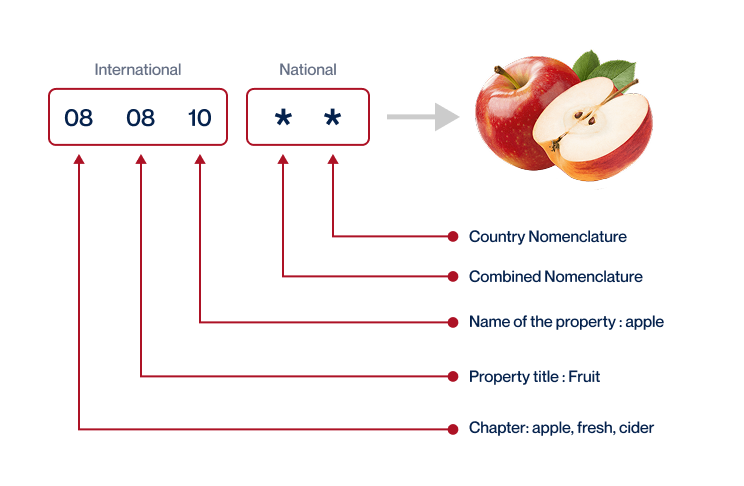
Step 3 – Calculate the Customs Value
Understanding the customs value of your shipment from Qatar to India can feel like a tricky task. Don’t worry, it’s not as intimidating as it seems. The customs value isn’t simply the price of your goods, but rather it’s the Cost, Insurance, and Freight (CIF) value. This includes the cost of the goods themselves, the price of international shipping, and the insurance cost. For instance, if your products cost $1,000, your shipping fees total $300, and your insurance runs $200, your CIF value, or the customs value, would be $1,500. Remember, this number is pivotal in determining your customs duties, making it a crucial figure to nail down accurately. Grasping this concept will set you on the path towards efficiently managing your India-bound shipments!
Step 4 – Figure out the applicable Import Tariff
The import tariff is essentially a tax imposed on goods coming into a country. India applies three kinds of tariffs: Basic, Additional (on items like luxury goods, tobacco), and True Countervailing Duties (CVD, identical to the taxes imposed on domestic products).
Knowing how much tariffs to pay for your goods is a crucial part of importing. Here’s how you can find the rate applicable to your goods:
1. Visit the Indian Customs Duty Calculator.
2. Enter the HS Classification Code (or Harmonized System code, a universal economic language for commodities) of your product. For instance, if you’re shipping refined palm oil, the HS code is 15119020.
3. Study the base rate or basic customs duty displayed.
Say your goods cost $1000, with a CIF of $200. If the basic customs duty on your product, as per Indian Customs, is 30%, the duty you would pay is (1000+200)30% = $360.
Beware: Every product comes under a specific code, and a wrong code entry can lead to incorrect duty calculation and trouble with customs. Hence, it’s essential that your HS code is accurate.
Once you’ve identified and calculated your import tariff, it should become simpler to factor this cost into your overall import budget. Dealing with duties can be complex, but with the right resources and understanding, it becomes manageable.
Step 5 – Consider other Import Duties and Taxes
After you’ve accounted for the standard tariff, take note that additional import duties may be levied based on the country of origin and nature of your products. For instance, excise duty can be applied on certain goods. This is over and above the basic customs duty and varies depending on the product category. Another potential charge is anti-dumping tax, put in place to protect domestic industries against unfair foreign pricing and government subsidies.
The most critical to remember is the Value-Added Tax (VAT). In India, it is renamed as Goods and Services Tax (GST) which ranges from 0% to 28%, with an average rate of 18%. Let’s say you’re importing electronics from Qatar to India priced at $10,000. If the applicable GST is 18%, you would need to pay an additional $1,800 as GST ($10,000 0.18).
Remember, these are just examples to give you an idea of the potential charges. Always research the current tax rates and cross-verify with a customs consultant or freight forwarder to prevent inaccuracies or unexpected fees. It’s getting hands-on with these details that make your import process smoother and cost-effective.
Step 6 – Calculate the Customs Duties
Calculating customs duties when importing goods from Qatar to India involves several key components – namely the customs value, Value Added Tax (VAT), anti-dumping taxes, and excise duty. The general formula considers these elements: Customs Duty = Customs Value x Duty Rate.
Take, for instance, your business is shipping machinery with a customs value of $1000 with a duty rate of 15%. The customs duty payable would be $150, and that’s without any VAT.
On the other hand, say you’re importing textiles valued at $2000 with a 10% duty rate and a 5% VAT. Your customs duty would be $200. Adding the VAT of $100 (5% of $2000), you’d owe $300 at customs.
Lastly, imagine shipping furniture, valued at $3000 with a duty rate of 20%, a VAT of 5%, anti-dumping taxes of $200, and an excise duty of 2%. Your customs duty would clock in at $600. Together with the VAT of $150, antidumping taxes, and the excise duty ($60), you’d owe a total of $1010.
Calculating these duties can be arduous. That’s where DocShipper comes in: we streamline customs clearance across the globe, ensuring you don’t overpay. Get in touch for a free quote within 24 hours and allow us to simplify your import process.
Does DocShipper charge customs fees?
While DocShipper serves as your custom broker in Qatar and India, remember we don’t charge customs duties. Our fees cover customs clearance tasks, but customs duties and taxes go directly to the government. Fret not, keeping everything transparent, we provide documents from the customs office outlining exact charges, ensuring you pay only governmental costs. It might sound complex, but think of it like ordering a meal delivery—you pay the restaurant for the food (taxes) and a separate charge for delivery (our service). We’re here to simplify the process for you.
Contact Details for Customs Authorities
Qatar Customs
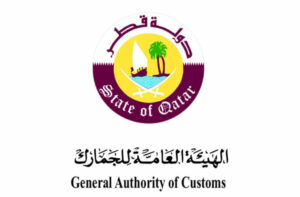
Official name: General Authority of Customs, State of Qatar
Official website: https://www.customs.gov.qa/
India Customs
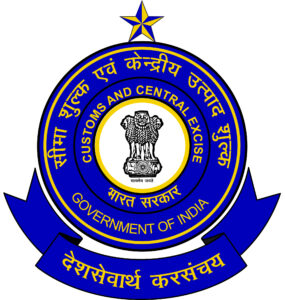
Official name: Central Board of Indirect Taxes and Customs (CBIC), India Official website: https://www.cbic.gov.in/
Required documents for customs clearance
Unsure about what paperwork you need for customs clearance? Dealing with Bill of Lading, Packing List, Certificate of Origin, or Documents of conformity (CE standard) may seem overwhelming but fear not. In this section, we simplify these documents, offering clarity to make your freight forwarding journey a breeze. Let’s dive in, shedding light not heat on your customs clearance process.
Bill of Lading
When shipping from Qatar to India, your Bill of Lading is a must-have. Think of it like the golden ticket that confirms ownership of your freight. Whether you’re shipping tons of fabric or a single piece of machinery, this document seals the deal and confirms you’re the rightful owner. It’s just as crucial in air cargo, where it’s known as the AWB. Even better, opt for the electronic or ‘telex’ release of these documents. You’ll love the streamlined, paperless process that saves time and reduces hassle. Remember, being meticulous with your Bill of Lading can make your shipping experience a breeze, freeing you up to focus on more important tasks—like growing your business.
Packing List
Shipping goods from Qatar to India? Then your Packing List is indispensable – whether you’re going by sea or air freight. Painless customs clearance hinges on a clear and thorough Packing List. Wondering why? It’s all about transparency. Authorities need to quickly verify what’s in your shipment. A rubber manufacturing company, for example, will have to detail each kind of rubber, quantities, weight, and HS (Harmonized System) codes. A gap between what’s declared and what’s really there can lead to significant delays or penalties. So for shippers, the rule of thumb is: immaculate accuracy is key. Not just because it’s your responsibility, but also because it paves the way for smoother transactions between Qatar and India. Don’t overlook this small but mighty document – it could make or break your shipping process.
Commercial Invoice
Navigating through customs between Qatar and India? Picture your Commercial Invoice as your product’s passport. It’s not just a charging document – it’s a story that reveals essential details. It displays crucial information about the buyer, seller, item description, and the agreed terms of trade. For seamless customs clearance, double-cross your information with other shipping documents to avoid discrepancies. Misalignment can lead to costly delays. Imagine you’re shipping spices from India to a restaurant in Qatar – the weights and description must echo across all files. Your Commercial Invoice is crucial in determining duties and taxes, so pay attention to the pricing details to avoid surprises. With a meticulous, meticulously prepared Commercial Invoice, you’re one step closer to a smooth shipping experience. Remember, accurate documentation is your friend in global trade.
Certificate of Origin
Navigating through the rough seas of international shipping, you’ll find the Certificate of Origin (CoO) as your true north. Consider this document as the ‘birth certificate’ for your goods, indicating their country of manufacture and the most important lifeline in your shipping voyage from Qatar to India. Why? It’s simple: Imagine your goods are automotive parts manufactured in Qatar. By presenting a well-prepared CoO detailing this, you can potentially enjoy preferential customs rates, akin to a VIP lane for your goods at Indian customs. That’s cash saved, directly impacting your bottom line. Think of it like an early-bird pass, fast-tracking your goods, and ensuring fewer hiccups in your shipment’s journey. Without your CoO, your shipment will be like a rudderless ship, leading to delays and higher costs in customs clearance. So, don’t forget to secure your Certificate of Origin. Sail on, shipper!
Certificate of Conformity (CE standard)
As a business looking to transport goods between Qatar and India, one key document you’ll need is the Certificate of Conformity (CE standard). This certification, prevalent in the European market, signifies that your goods comply with health, safety, and environmental protection standards. It’s distinct from quality assurance, as it’s a mandatory regulatory requirement rather than an optional process.
Though CE is a European norm, its international recognition means even non-EU countries may require it. For instance, if you’re shipping electronics, machinery, or toys, a CE mark stands testament to their compliance, boosting trust in your product. Comparably, the US has similar requirements in the form of FCC and UL standards for certain products.
Your action point? Learn which of your goods need a CE certificate and ensure your products comply. This proactive approach can help avoid any customs issues, making your Qatar-India shipping journey smoother. Remember, informed preparation saves time, money, and stress.
Get Started with DocShipper
Prohibited and Restricted items when importing into India
Knowing what to import into India without facing legal hassle can be a real head-scratcher! Not to worry, this guide will illuminate the dos and don’ts, saving you from unexpected fines or shipment delays. Brace yourself to crack the codes of Indian customs restrictions and prohibitions.
Are there any trade agreements between Qatar and India?
Yes, Qatar and India have a robust trade relationship but not under a formal Free Trade Agreement or Economic Partnership Agreement. They annually review their trade ties through the Qatar-India Joint Commission, navigating a path towards possible future agreements. For your business, this dynamic relation means potential opportunities. Proposed infrastructure projects, like the direct ferry service, could reduce shipping time and cost. Stay tuned for ongoing trade talks that might eventually lead to more trade benefits.
Qatar – India trade and economic relationship
Qatar and India have forged an economic and trade relationship dating back to the 19th century, with noteworthy increases in the trade volume since the early 2000s. Notably, Qatar is India’s third-largest supplier of crude oil, a bond that complements their robust commercial ties—Qatar’s investments in India recently exceeded $3 billion, predominantly drawn to India’s energy sector. The volume of goods traded between the nations equates to approximately $10.3 billion in 2022, with major commodities extending beyond oil to include petrochemicals, pearls, and precious metals. Key sectors also include construction, technology, and services. Additionally, both nations enjoy thriving cultural exchanges, reinforcing the alliance. This rich history and strong commercial interdependence form the bedrock of the Qatar-India trade and economic relationship.
Your first steps with DocShipper
Additional logistics services
Warehousing
Stuck finding trustworthy warehousing in Qatar or India? Specific goods demanding temperature control can add to your woes. But fret not, a solution tailored for your needs awaits. Dive deeper into perfecting your supply chain with our warehousing services providing controlled environments for your precious freight. More info on our dedicated page: Warehousing.
Packing
Understanding the finer nuances of packing for India-Qatar exports? It's not as easy as wrapping a birthday gift. That's where we step in. With a specialist agent, resolve worries about goods getting damaged or delayed. Imagine shipping fragile ceramics; our experts would use bubble wrap, appropriate boxing, and labeling, making transit a cakewalk. Or, got a last-minute order? We help repack swiftly, keeping you in business and on-time. The right packing: your first step towards a hassle-free export journey.

Transport Insurance
Transporting goods comes with its share of risks, and unlike fire insurance, cargo insurance covers these uncertainties. Picture this: a high-sea storm damages your precious consignment - quite the scare, right? A comprehensive cargo insurance plan can step in here, turning potential nightmares into minor hiccups. It's all about risk mitigation, ensuring your shipments are financially protected from warehouse to warehouse, whatever unpredictability the journey brings. Imagine the peace of mind you'd feel!
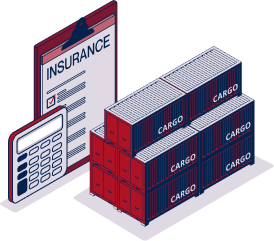
Household goods shipping
Relocating from Qatar to India, you'll find your prized possessions, be it your grandmother's vintage vase or that king-size bed, handled with utmost care. Rely on our expert packers, and marvel as bulky items fit effortlessly into compact containers. Imagine the relief when your belongings arrive at your new Indian home, safe and intact - that's the peace of mind we offer with Personal Effects Shipping.
Procurement in Thailand
Struggling to find trustworthy suppliers in Asia or East Europe? DocShipper is your lifeline, taking the reins of your procurement process. We eliminate language misunderstandings and guide you step-by-step, ensuring your goods are in capable and reliable hands. Say goodbye to sourcing headaches and hello to smooth shipping from your favorite foreign markets. Discover the difference with DocShipper on our dedicated page: Sourcing services.

Quality Control
Ensuring your goods meet standards in Qatar-India shipments is paramount. Think of quality checks like your last line of defense against rejections at Indian customs. For example, a clothing retailer avoids hefty re-shipment costs by promptly correcting any deviations in fabric quality. With our service, tackle any quality issues head-on before they become expensive problems.

Conformité des produits aux normes
Shipping goods? Don't let regulatory mishaps trip you up! With our Product Compliance Services, we'll ensure your items satisfy all relevant regulations. From testing in world-class labs to securing necessary certifications, we've got you covered. Picture this: you're exporting ceramics - we'll verify they're lead-free, so you can confidently enter your new market, hassle-free!
